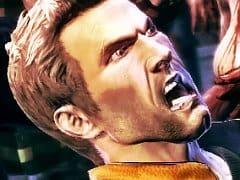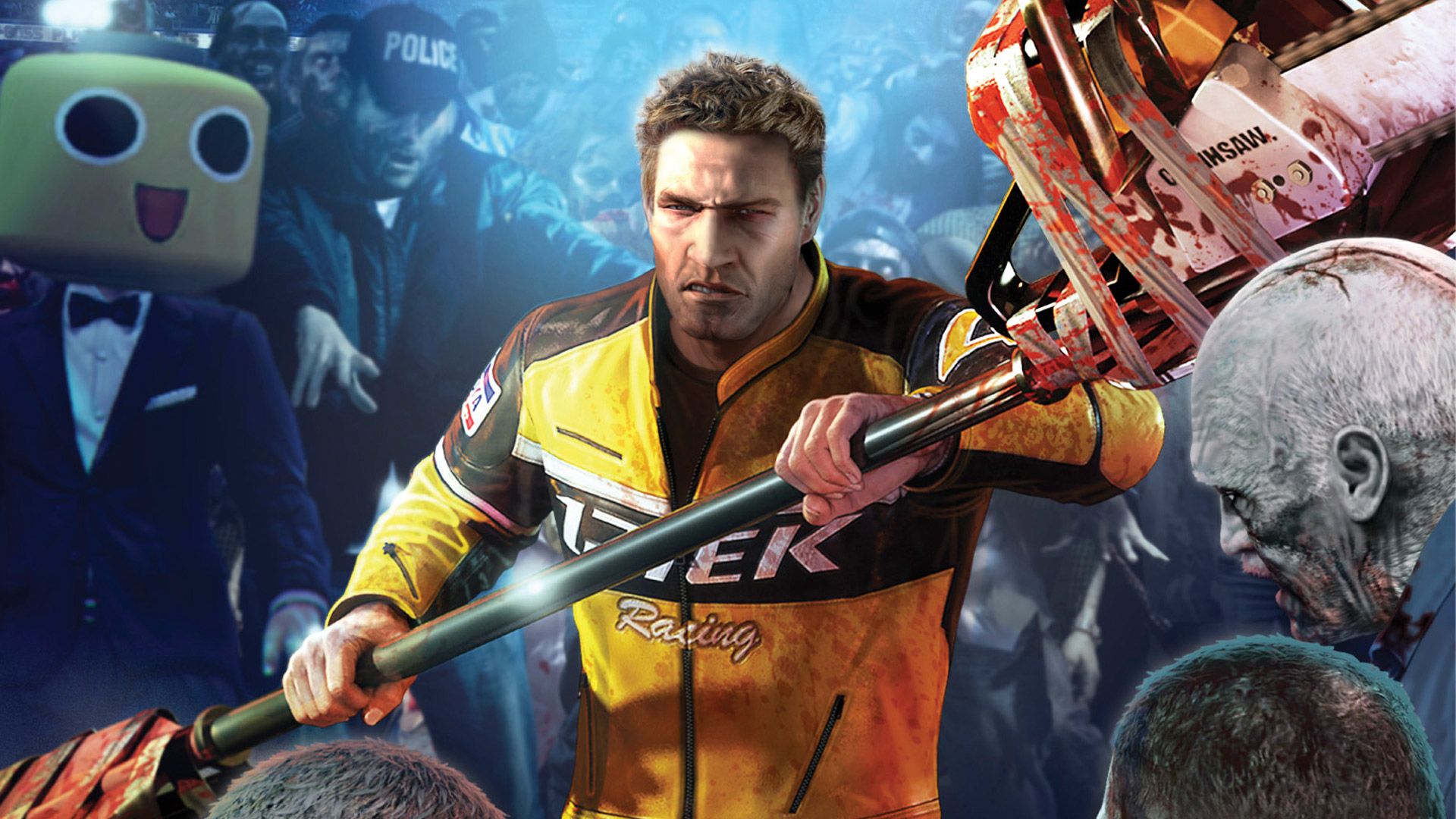You can trust VideoGamer. Our team of gaming experts spend hours testing and reviewing the latest games, to ensure you're reading the most comprehensive guide possible. Rest assured, all imagery and advice is unique and original. Check out how we test and review games here
Keiji Inafune is more than the creator of Mega-Man and the producer of upcoming zombie-fest Dead Rising 2. He is the head of global research and development at Capcom. That means he’s a big cheese. One of the biggest, in fact. Well, we eat big cheeses for breakfast. At E310 last week, we sat down with Inafune to discuss the decline of the Japanese gaming industry, Capcom’s poor Western-developed titles and the mysterious case of Devil May Cry 5.
Q: What is your impression of E310, the press conferences and the new technologies that the platform holders have unveiled?
Keiji Inafune: Every year that I come to E3, year in and year out, the one thing I’ve noticed is that it seems like the Japanese game developer share seems to be getting smaller and smaller. If you look at the major titles, they’re now primarily Western. If you look at all the different signs and all the billboards, most of those are Western titles. A lot of the key announcements are also Western titles. I think to myself sometimes, if we keep on this course, the Japanese gaming market will disappear totally. That is one of the valid concerns that I have, which is why as a Japanese publisher, as Capcom, we really want to fight the good fight, and try and make our games work within this more primarily Western market.
Q: How do you do that? How are you doing that?
KI: So, of course, we can’t just rely on our own skill, our own Japanese developer skill and know-how, to steer us through this dark time. It’s going to have to come through collaborative efforts and co-operation. It’s our US staff, our European staff, working closely with them. Of course we are working with a lot of different Western developers as well. It’s being able to share their knowledge and information, to collaborate with them on a very in-depth level, that’s going to allow us to grow as a company and to be able to understand how the market is changing in the West, and allow us to be competitive in those markets. That’s going to be essential for us.
Q: Some of Capcom’s recent Western-developed games haven’t been as good as people had hoped. What will you do to ensure future Western-developed titles won’t turn out the same?
KI: Ultimately in the past, when we worked with Western developers, we really hadn’t hit our stride. It’s not an easy thing to do to find the perfect mix, the perfect match, of how we’re going to be able to work with companies and developers that are in totally different countries. In one area we were saying create the game that you wanted to create, and I don’t think we had given them enough advice. But then on the flipside there were some areas where we were probably asserting too much – the game had to be like this – and forcing those developers into a style that they weren’t comfortable with. We had to feel around to get to a point where we really understood the proper way – the best mix that we should go after for the most proper collaboration, to get the best of both worlds, rather than getting some of the worst sides of both.
With Dead Rising 2, right now, we have finally reached it. We have learned what areas work, what areas don’t work, and that has helped us to create Dead Rising 2, which looks very much like the first one, feels like it’s got that Capcom essence to it, yet there are a lot of ideas and concepts in that game that a Japanese development staff would not have come up with. So it does take the best of the West and the best of Japanese game aesthetic design. Now that we have that knowledge, we can use that in future Western titles going forward. It’s not an easy process. It took some growing pains, but we finally got there.
The other thing that’s changed is that come this last April, I became the global head of all R&D throughout the world for Capcom. Now I’m able to give them sound advice to all the development teams, as well as synch them up so that we all are collaborating and we’re not separate companies just because we’re on different sides of the globe. I think that’s helping a lot, too.
Q: Motion control has been a big part of this year’s E3. Now that both Microsoft and Sony have fully unveiled their technologies, which of the two are you most interested in, and which is more relevant when it comes to Capcom’s traditional titles?
KI: Both of those respective hardwares and technologies are very great. But of course, the way you interact with them as the end user is going to be slightly different. Therefore, there are going to be some genres that are going to fit one that won’t fit the other, and vice versa. As a game designer, it’s going to be how well you can design it to fit that gameplay experience. Now for Capcom in general, most of our titles are multiplatform. That’s the strategy we usually adopt. However in this situation, the way you interact with the hardware is going to be so different from both sides, that multiplatform is going to be something that’s going to be more difficult. In that instance, we’ll give up on multiplatform. We’ll stick with one or the other. If we do that, then we’re going to make sure that the experience we create is going to be custom tailored for that hardware, and make sure it fits that control scheme. If you’re going to design for one or the other, then you’re going to want to make sure the genre fits and the design totally fits that interactivity that you’re going for.
Q: Can you give me an example of the kind of genres you feel are better tailored to each technology? Do you share the view that hardcore-focussed video games aren’t suited to motion sensing technology? Could Dead Rising 2, for example, incorporate Kinect and PlayStation Move support?
KI: Ultimately, if you think about what hardcore gamers are used to, they’ve played on controllers for their whole lives, so that may naturally feel better to them than, say, a more not as precise motion sensing technology. So that’s definitely something that we may see a split in the different sort of people and genres that you’re going to see for that peripheral versus what you may see for a standard piece of hardware. That being said, a good example may be something like an FPS. I’m not saying that’s a genre that fits motion sensing technology. But when you think about what an FPS is, it’s fun because it puts you in the shoes of that soldier, of that hero. You feel the world around you. You’re seeing through the eyes of a character. If the concept of what makes FPS games so interesting is that you’re in that person’s shoes, then certainly motion sensing technology allows you to feel even more like that person. It allows you to create a gameplay experience where you’re able to more put yourself into the shoes of that character. Again, I’m not saying that necessarily FPSs are going to go onto Kinect or the Move and now all of a sudden they’re going to be great. I’m saying as far as making people feel like they’re inside that gaming world, that technology can help do that. Whereas a normal controller, you’re still going to be interacting with the controller instead of using your own body, which is one of the differences.
Q: Dead Rising 2 is a game many people are looking forward to. Is there perhaps more pressure on this game to meet fan expectations than previous titles you’ve worked on?
KI: Yeah, of course there is a certain amount of pressure that we feel to make this game successful. But it is merely only one tier, one point, in our global strategy. If, say, the game did not work out, and it was unsuccessful, that does not mean that all of a sudden we would change our strategy of trying to work with the West, because we feel that’s the future. That doesn’t mean we’d give up. We would then rethink where the collaboration went wrong, and then come back again and try and see if we couldn’t do it in a different approach – if it didn’t work out. Of course, there is some pressure. It’s not pressure where we’re like, oh no! Capcom’s going to go under unless this game is successful.
Q: Finally, what’s happening with the Devil May Cry series? Is the series still popular enough to justify a new game, or does it need a rest for a while before you bring it back with a fifth game?
KI: Yes, there are a lot of fans of the Devil May Cry series. We need to look at them, analyse what they want in a game, what they don’t want in a game, and then take that into account for if we are going to create a future title, and see if there is something we can create that is going to overcome their expectations, as well as create a title that’s going to get a lot of critical acclaim and be reviewed quite well. We don’t just want to come at it and just say, oh it’s a popular series, let’s make a sequel. We want to say, let’s make a sequel that’s going to be custom-tailored to what the fans want, and on top of that, prove that, again, it’s a great game, it’s a fun game, it’s got lasting appeal, and it’s going to be particularly well-liked by the media as well.
Dead Rising 2 is scheduled for release on September 3, 2010, for Xbox 360, PS3 and PC.
Dead Rising 2
- Platform(s): PC, PlayStation 3, PlayStation 4, Xbox 360, Xbox One
- Genre(s): Action

/https://oimg.videogamer.com/images/76bb/dead_rising_2_78.jpg)






